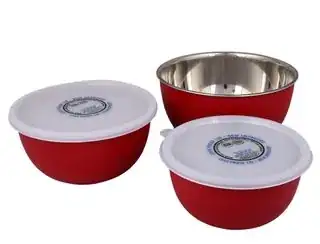Essentially all food-safe glass and ceramic dishes are microwave safe these days - it's possible to make non-microwave-safe things, but there's not a lot of market for non-microwaveable dishes. Paper is too, but it's generally disposable. If you've decided that you don't like glass, you can still use whatever ceramic you want. It won't be any safer than glass, but it won't be less safe either. You do still want to look for some kind of microwave- or at least heat-safe label, though, and test it without food first if it doesn't have the microwave-safe label.
From the FDA:
Glass, paper, ceramic, or plastic containers are used in microwave cooking because microwaves pass through these materials. Although such containers cannot be heated by microwaves, they can become hot from the heat of the food cooking inside. Some plastic containers should not be used in a microwave oven because they can be melted by the heat of the food inside.
Note that this addresses your concern about dishes heating up: some of that is normal. However, dishes that truly heat up in the microwave aren't a good idea. The best way to check is by heating them without food on them, but with a cup of water in the microwave to absorb energy so the microwave isn't totally empty. That will let you see how much, if any, the dish is heating up compared to the water that actually should be heated. If you want the really paranoid version, here's a test from a ceramics store:
To test microwave safety, take a piece (such as a mug or bowl) and immerse in a pan of water. Bring the water to a boil, then simmer for a few hours. This will allow the piece to absorb water. Then put the piece in the microwave. (The piece should be empty, and you should also put a separate mug of water in the microwave to protect the microwave.) Heat the microwave on high in 10 second increments. After each 10 seconds, carefully touch the piece to see if it is hot. If it has absorbed water, it will heat up. This tells you the piece is not dishwasher safe. You can stop the test when the water in the second mug is boiling.
There are a few other things you might want to watch out for when purchasing:
Metal - sometimes you'll see glass or ceramic with metal details, like a gold or silver rim. That's no good in a microwave.
Glazes - some glazes used on ceramic aren't food-safe, so make sure you get something labeled for use with food, not something purely decorative. Some glazes also aren't dishwasher-safe. In the US, non-food-safe ceramic glazes are required to have a label ("not for food use" or some such), but that may not be true where you are.
Thermal differences - some materials won't hold up well to uneven heating in the microwave caused by hot food in contact with some parts, but not others. Make sure to get things labeled as heat-safe: the ideal case microwave-safe, oven-safe, and dishwasher-safe dishes, but any one of those indicates some amount of heat safety.
Finally, for anything breakable, watch out for super-heated water - heating pure water in a clean container can take it past the boiling point, and it'll then violently boil when disturbed. If you add something to water first, the risk is drastically reduced. It's a dangerous surprise with any type of material, but with breakable containers there's the added risk of breaking the dish.
